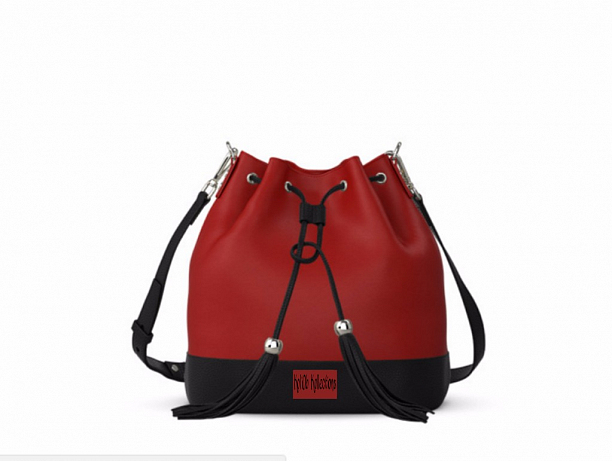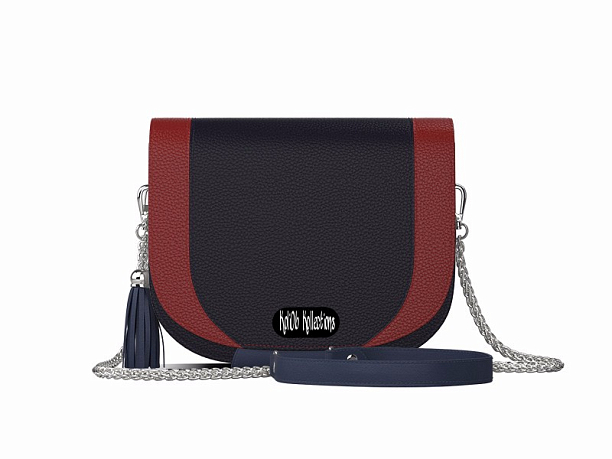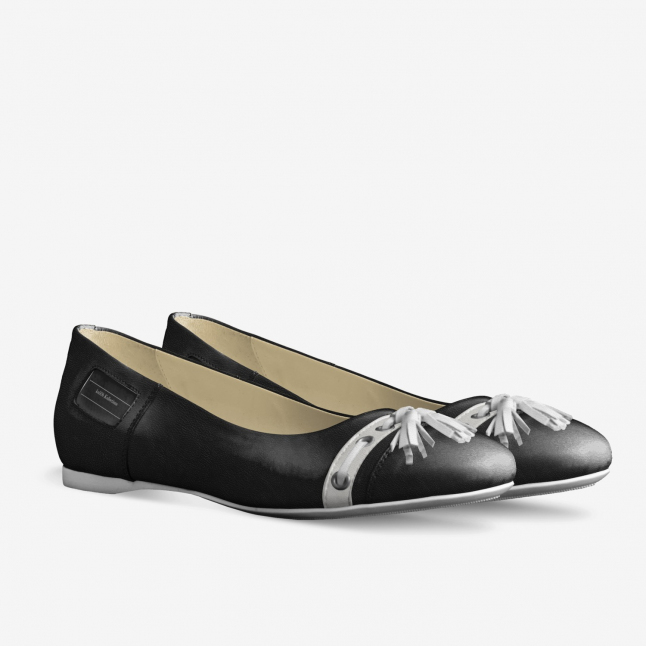23318
koliOb Kollections
Leather Manufacturing company
Nigeria
Market: Production, Other
Stage of the project: Prototype or product is ready
Date of last change: 14.11.2017
Nigeria
Market: Production, Other
Stage of the project: Prototype or product is ready
Date of last change: 14.11.2017
Idea
According to Nigeria Daily Post quoting the director of the Department of Livestock and Disease Control, Dr Joseph Nyager, “80% of footwear in Nigeria are imported from China with only 10% made in the country and the other 10% from Europe and Morocco”. The Aba leather industry in South Eastern Nigeria has the potential to produce quality leather products that nearly compares to the Italian brand, yet they have no presence outside the country.
My company intends to revitalize the leather industry by leveraging Nigerian artisan factory relationships to generate high quality leather products.
My company intends to revitalize the leather industry by leveraging Nigerian artisan factory relationships to generate high quality leather products.
Current Status
We have already Identified and made contact with different artisans who have over 15 years of experience in shoe, belt and bag making. We have verified the quality of their craftsmanship and found them very satisfying. We have made marketing, sales plans and we have already secured a domain name for the company. We have also made out first set of prototype and tested the products with potential customers.
Market
The profile for KoliOb Kollections' customer consists of the following geographic and demographic factors:
Geographics: The immediate geographic target is Nigeria which has a population of 91 million women(population pyramid.net). The total targeted population is estimated to be about 14 million.
Demographics:
o Age range 18 - 35 years.
o They are both either single/married.
Market Segmentation:
There are two major customer segments for KoliOb Kollections and they are: Students and Young Professionals. The behavioral factors of this segment of the market include:
• Social Media Savvy
• Fashion conscious.
• Tend to buy shoes at least once every 2 months,typically more.
• Are always aware of the different fashion trends.
• Subscribe to, or at least read several women's magazines/blogs that are fashion oriented.
• Want to look cool without having to spend a fortune.
• Impulsive buying.
Market Growth:
The market forfootwear and apparel is a strong, steady growing market. It is generally not affected by economic downturns. People seem to consume shoes and other fashion products regardless of the economic climate. World Population Review (http://worldpopulationreview.com) estimated the population of females in Nigeria to increase to 195 million in 2050 from 91 million in 2016. In fact, a recent study in http://FootwearNews.com found out that 45% of women buy 5 or more pairs of shoes yearly, while 21% of women buy 7 or more pairs per year, This is likely to increase as more women around the world enter the working world, thus increasing the demand for women's footwear. According to a report by Business of fashion, the Nigerian apparel and footwear market is worth $4.7 billion (about 1.4 trillion Naira)
Geographics: The immediate geographic target is Nigeria which has a population of 91 million women(population pyramid.net). The total targeted population is estimated to be about 14 million.
Demographics:
o Age range 18 - 35 years.
o They are both either single/married.
Market Segmentation:
There are two major customer segments for KoliOb Kollections and they are: Students and Young Professionals. The behavioral factors of this segment of the market include:
• Social Media Savvy
• Fashion conscious.
• Tend to buy shoes at least once every 2 months,typically more.
• Are always aware of the different fashion trends.
• Subscribe to, or at least read several women's magazines/blogs that are fashion oriented.
• Want to look cool without having to spend a fortune.
• Impulsive buying.
Market Growth:
The market forfootwear and apparel is a strong, steady growing market. It is generally not affected by economic downturns. People seem to consume shoes and other fashion products regardless of the economic climate. World Population Review (http://worldpopulationreview.com) estimated the population of females in Nigeria to increase to 195 million in 2050 from 91 million in 2016. In fact, a recent study in http://FootwearNews.com found out that 45% of women buy 5 or more pairs of shoes yearly, while 21% of women buy 7 or more pairs per year, This is likely to increase as more women around the world enter the working world, thus increasing the demand for women's footwear. According to a report by Business of fashion, the Nigerian apparel and footwear market is worth $4.7 billion (about 1.4 trillion Naira)
Problem or Opportunity
According to Nigeria Daily Post quoting the director of the Department of Livestock and Disease Control, Dr Joseph Nyager, “80% of footwear in Nigeria are imported from China with only 10% made in the country and the other 10% from Europe and Morocco”. The Aba leather industry in South Eastern Nigeria has the potential to produce quality leather products that nearly compares to the Italian brand, yet they have no presence outside the country.
Over the years, increased reliance on overseas manufacturers have lowered the prices of and demand for Nigerian made leather products, hence making the local artisans to use inferior materials in production in a bid to make profit, leading to the production of low quality shoes thereby accelerating consumer migration toward better designed, trendier foreign ones. In the process, however, Nigerian design innovation has substantially deteriorated.
There's is currently an ongoing campaign #buynaijatogrowthenaira, meaning buy made in Nigeria to grow the economy and there's no better time to invest in Made in Nigeria Leather works production than now, there are favorable government policies supporting Nigerian made leather works and Nigerians are gradually warming up to buying them.
Over the years, increased reliance on overseas manufacturers have lowered the prices of and demand for Nigerian made leather products, hence making the local artisans to use inferior materials in production in a bid to make profit, leading to the production of low quality shoes thereby accelerating consumer migration toward better designed, trendier foreign ones. In the process, however, Nigerian design innovation has substantially deteriorated.
There's is currently an ongoing campaign #buynaijatogrowthenaira, meaning buy made in Nigeria to grow the economy and there's no better time to invest in Made in Nigeria Leather works production than now, there are favorable government policies supporting Nigerian made leather works and Nigerians are gradually warming up to buying them.
Solution (product or service)
The company creates original footwear, bags and belts that are handcrafted in artisan factories in Aba, Nigeria, for sale under its branded name.
The products include;
▪ Interchangeable Sandals
▪ Flat Sandals
▪ Flat Slippers
▪ High Heel Shoes
▪ High Heel Sandals
▪ Wedges
▪ Flat shoes
▪ Handbags
▪ Wallets
▪ Belt
The products include;
▪ Interchangeable Sandals
▪ Flat Sandals
▪ Flat Slippers
▪ High Heel Shoes
▪ High Heel Sandals
▪ Wedges
▪ Flat shoes
▪ Handbags
▪ Wallets
▪ Belt
Competitors
The direct Competitors Include:
a. Online stores that serve as a selling platform for retailers of branded foreign Shoes, bags and belts- the major players here are Konga.com, Jumia.com.ng and Kaymu.com- The strength retail platforms have a large number of customer base but they are diversified, in the sense that they do not sell only leather products, hence they're not focused only on that, but KoliOb Kollections intends on focusing only on producing leather products because we believe in "being the best at what we do"
b. Online Retailers such as ohmyshoes.com, naijafeet.com and myshoes.ng - These companies offer their products to basically anyone using the efficiencies of the internet. There are approximately many internet retailers in Nigeria. Their major strength is their customer base. Their major is their lack of niche and high prices, they are just retailers hence do not produce the products, so they have to add markup on the company price of the products in other to make profit. . The key is marketing our target customers in the traditional advertising medium for fashion, i.e. women magazines and also on fashion blogs. The ads will focused on a key message which is "the elimination of the middle man in your footwear budget and stepping up to the distinctive style of KoliOb Kollections". The company logo also be an important marketing tool in bringing customers to our website.
c. Branded Nigerian made Shoe companies such as hesey designs and T.T.Dalk- These companies are similar to KoliOb Kollections because they are branded. Their major weakness is their ridiculously high prices. None of these sites are close in terms of product offerings compared to koliOb Kollections.
a. Online stores that serve as a selling platform for retailers of branded foreign Shoes, bags and belts- the major players here are Konga.com, Jumia.com.ng and Kaymu.com- The strength retail platforms have a large number of customer base but they are diversified, in the sense that they do not sell only leather products, hence they're not focused only on that, but KoliOb Kollections intends on focusing only on producing leather products because we believe in "being the best at what we do"
b. Online Retailers such as ohmyshoes.com, naijafeet.com and myshoes.ng - These companies offer their products to basically anyone using the efficiencies of the internet. There are approximately many internet retailers in Nigeria. Their major strength is their customer base. Their major is their lack of niche and high prices, they are just retailers hence do not produce the products, so they have to add markup on the company price of the products in other to make profit. . The key is marketing our target customers in the traditional advertising medium for fashion, i.e. women magazines and also on fashion blogs. The ads will focused on a key message which is "the elimination of the middle man in your footwear budget and stepping up to the distinctive style of KoliOb Kollections". The company logo also be an important marketing tool in bringing customers to our website.
c. Branded Nigerian made Shoe companies such as hesey designs and T.T.Dalk- These companies are similar to KoliOb Kollections because they are branded. Their major weakness is their ridiculously high prices. None of these sites are close in terms of product offerings compared to koliOb Kollections.
Advantages or differentiators
Our competitive advantage lies in offering product lines that make a purpose statement and will not leave our customers broke. The major brands are expensive and not distinctive enough to satisfy the changing taste of our target customers. KoliOb Kollections offers products that are just ahead of that curve and affordable so our customers will return to the website often to check out what's new.
Another competitive factor is that products for this age group are a share of a lifestyle statement. KoliOb Kollections is focused on serving young women. We want to represent their style and life choices. We believe that we will create a loyal customer base that will see KoliOb Kollections as a share of their Lives. To facilitate that connection, our website will include a blog where our customers can share what is happening in their communities as well as well as our products and how we should improve or what we should add to our product line in the future so as to serve them better. We believe also that our focus on social media should give us an edge on our local competition and enable us to attract more customers.
Another competitive factor is that products for this age group are a share of a lifestyle statement. KoliOb Kollections is focused on serving young women. We want to represent their style and life choices. We believe that we will create a loyal customer base that will see KoliOb Kollections as a share of their Lives. To facilitate that connection, our website will include a blog where our customers can share what is happening in their communities as well as well as our products and how we should improve or what we should add to our product line in the future so as to serve them better. We believe also that our focus on social media should give us an edge on our local competition and enable us to attract more customers.
Finance
Projected sales for the first five years are $33,000, $39,600, $51,480, $64,350 and $80,438 respectively with a projected cost of goods sold of $13200, $15047, $18533, $22,523, $28,153 resulting in a gross profit margin of $19,800, $24552, $32,947, $41,828 and $52284 respectively.
Business model
The company will operate with the bricks and clicks model whereby a customer can either order online or in the store.
Money will be spent on
koliOb Kollections is seeking investor commitments totaling $10,000 to fund identifiable working capital and capital expenditure requirements of $3500, starting inventory of $5000 and to provide contingent reserves of $1500.
Capitalization Plan : koliOb Kollections proposes to fund the business by obtaining Investor commitments, totalling $10,000. This cash infusion would be used to cover identifiable working capital requirements along with identifiable capital expenditure requirements comprised of property, plant and equipment, and to also establish contingent cash reserves
Capitalization Plan : koliOb Kollections proposes to fund the business by obtaining Investor commitments, totalling $10,000. This cash infusion would be used to cover identifiable working capital requirements along with identifiable capital expenditure requirements comprised of property, plant and equipment, and to also establish contingent cash reserves
Offer for investor
I am offering up 30% of my company for an equity investment of $10,000.
Team or Management
Risks
Just like any other business, one of the major risks KoliOb Kollections is likely going to face is economic downtown. It is a fact that economic downturn affects purchasing power negatively. Another risk that may likely confront us is the arrival of a new shoe line who may want to adopt same business model as ours. However, one thing is certain, whether good, bad, people will always look for footwear to wear and bags to carry; the opportunity for a fashion line to sell is massive and we hope to leverage on these opportunities.
Photos


Sign in/Sign up
